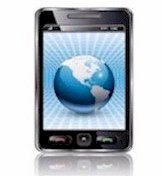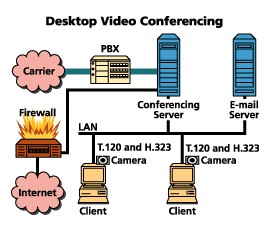|
|
DSC Tech Library
Computer Telephony Integration
 This section of our technical library presents information and documentation relating to CTI Computer Telephony Integration software and products.
Computer Telephony Integration CTI software is a rich set of phone software library routines that enable application programs to control your phone system.
This comprehensive CTI software lets you increase employee productivity, enhance customer service and reduce costs by combining the capabilities of our PACER phone system with the custom functionality of your Windows, Unix or Web applications.
Data collected by your phone ACD (Automatic Call Distribution) or IVR (Interactive Voice Response) systems can be passed to your existing PC, Unix or Web applications through our phone software.
The PACER predictive dialer can automatically call your customers and pass only connected calls to your agents. With our computer telephony software, your telephone and computer work together to provide cost-saving benefits.
This section of our technical library presents information and documentation relating to CTI Computer Telephony Integration software and products.
Computer Telephony Integration CTI software is a rich set of phone software library routines that enable application programs to control your phone system.
This comprehensive CTI software lets you increase employee productivity, enhance customer service and reduce costs by combining the capabilities of our PACER phone system with the custom functionality of your Windows, Unix or Web applications.
Data collected by your phone ACD (Automatic Call Distribution) or IVR (Interactive Voice Response) systems can be passed to your existing PC, Unix or Web applications through our phone software.
The PACER predictive dialer can automatically call your customers and pass only connected calls to your agents. With our computer telephony software, your telephone and computer work together to provide cost-saving benefits.
Computer Telephony for the Enterprise
Page 7
By Michael Sampson
DESKTOP VIDEOCONFERENCING
Desktop videoconferencing provides a means of speeding up internal decision-making processes by providing a near-face-to-face quality of meeting without the downtime associated with travel. Distributed decision makers can convene a videoconference from their workspace at any time to talk through the latest issues, and be fully briefed and conversant with the facts before making the actual decision. This means that new product and competitive response decisions are made quicker, which are both essential behaviours in a fast moving competitive environment.
For the end user, desktop videoconferencing adds the missing visual cues that make up a large portion of a communication task. Video mail is a messaging-application of a videoconferencing infrastructure; it works by letting users record a video clip of themselves conveying information, with the resultant file distributed across the messaging infrastructure. Desktop videoc onferencing client software often comes bundled with video mailclient software--AudioVision from Smith Micro Software for example.
 Deploying desktop videoconferencing requires suitable client software for each end user, camera hardware, and depending on the inherent capability of the camera software and hardware, a new video board may need to be installed into each computer. On the back end, videoconferencing server software and hardware is required to interconnect and coordinate client interactions.
Deploying desktop videoconferencing requires suitable client software for each end user, camera hardware, and depending on the inherent capability of the camera software and hardware, a new video board may need to be installed into each computer. On the back end, videoconferencing server software and hardware is required to interconnect and coordinate client interactions.
The deployment of desktop videoconferencing (and video mail) requires consideration of the following issues:
- Client requirements: Users require both camera hardware and client software to participate in a desktop videoconferencing session. A low-cost camera alternative is the Connectix line from Connectix Corporation.
- Single copy mail store: Don't implement video mail unless you have a single copy mail store (stores a single copy of an e-mail message on a mail server when there are multiple recipients of the e-mail on the server). Without it, your messaging infrastructure will grind to a halt when users start replacing a 5-KB multirecipient e-mail with a 1 MB video message. Also, it's instances like this that the efficiency of the video codec becomes very important!
- Server and network issues: Is your network provisioned to handle real-time video traffic? Don't move ahead until it is. For the server software providing the interconnection between multiple client ends, ensure it is run on a suitably powerful video capable machine, and that it supports the network protocols you have in place today.
Live 200 version 1.5 from PictureTel is a noteworthy hardware-software bundle for desktop video conferencing. It is built by an established industry leader, it supports all the right standards, PictureTel has a developer's kit available (LiveDTK), and it doesn't require a special graphics card (minimizing addition al client requirements). Last but not least, it has garnered an array of industry awards since its release in 1997
Page
[1]
[2]
[3]
[4]
[5]
[6]
[7]
[8]
[9]
Next
|


 This section of our technical library presents information and documentation relating to CTI Computer Telephony Integration software and products.
Computer Telephony Integration CTI software is a rich set of phone software library routines that enable application programs to control your phone system.
This comprehensive CTI software lets you increase employee productivity, enhance customer service and reduce costs by combining the capabilities of our PACER phone system with the custom functionality of your Windows, Unix or Web applications.
Data collected by your phone ACD (Automatic Call Distribution) or IVR (Interactive Voice Response) systems can be passed to your existing PC, Unix or Web applications through our phone software.
The PACER predictive dialer can automatically call your customers and pass only connected calls to your agents. With our computer telephony software, your telephone and computer work together to provide cost-saving benefits.
This section of our technical library presents information and documentation relating to CTI Computer Telephony Integration software and products.
Computer Telephony Integration CTI software is a rich set of phone software library routines that enable application programs to control your phone system.
This comprehensive CTI software lets you increase employee productivity, enhance customer service and reduce costs by combining the capabilities of our PACER phone system with the custom functionality of your Windows, Unix or Web applications.
Data collected by your phone ACD (Automatic Call Distribution) or IVR (Interactive Voice Response) systems can be passed to your existing PC, Unix or Web applications through our phone software.
The PACER predictive dialer can automatically call your customers and pass only connected calls to your agents. With our computer telephony software, your telephone and computer work together to provide cost-saving benefits.
 Deploying desktop videoconferencing requires suitable client software for each end user, camera hardware, and depending on the inherent capability of the camera software and hardware, a new video board may need to be installed into each computer. On the back end, videoconferencing server software and hardware is required to interconnect and coordinate client interactions.
Deploying desktop videoconferencing requires suitable client software for each end user, camera hardware, and depending on the inherent capability of the camera software and hardware, a new video board may need to be installed into each computer. On the back end, videoconferencing server software and hardware is required to interconnect and coordinate client interactions.